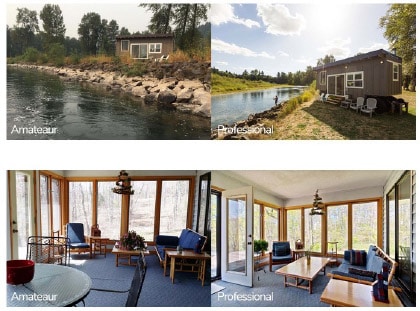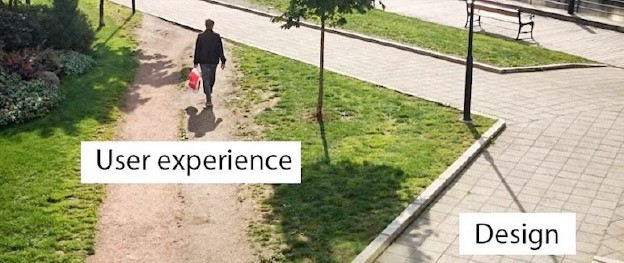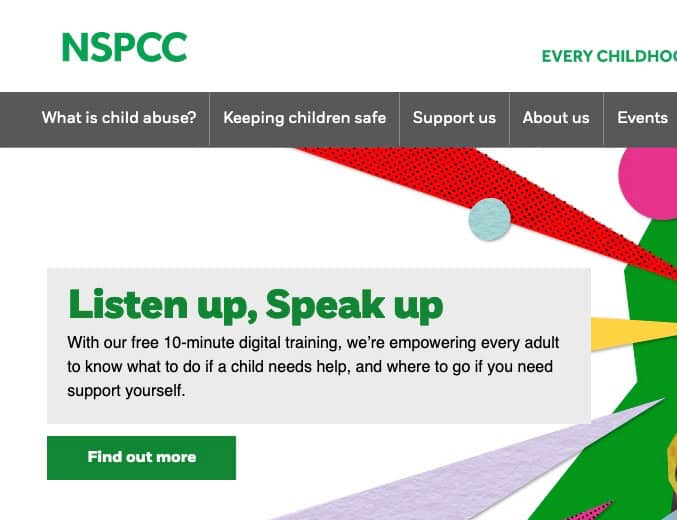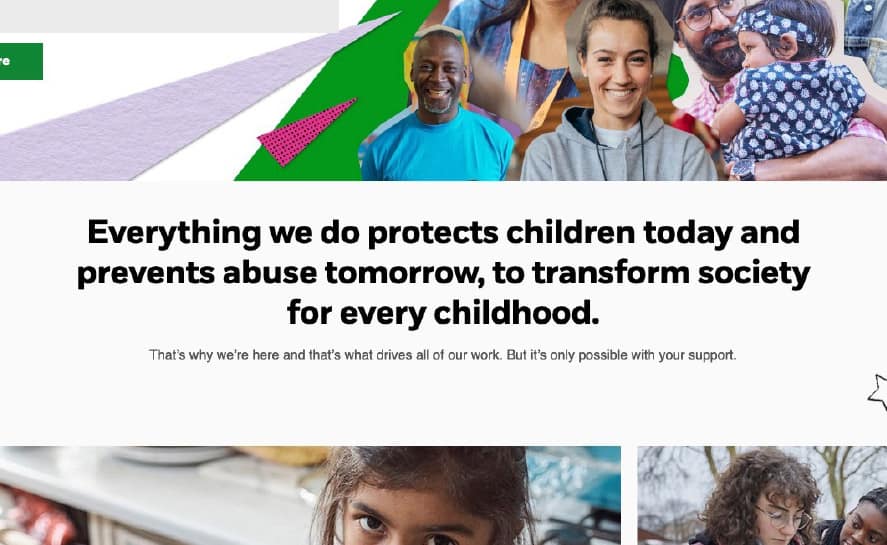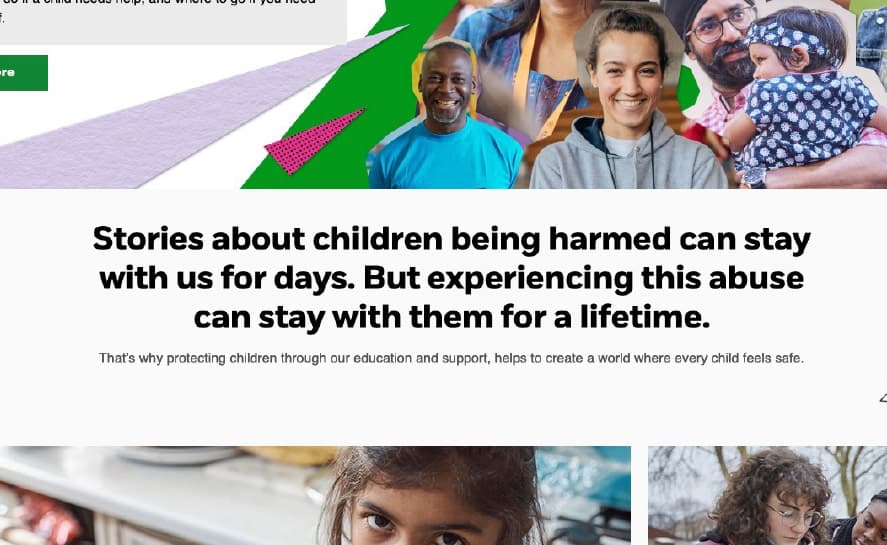How websites will change in 2023

If you’re wondering how you can use your website to increase business in 2023, then watch the recording of this webinar.
I explore a key new trend that is predicted to help businesses and organisations improve their website’s success.
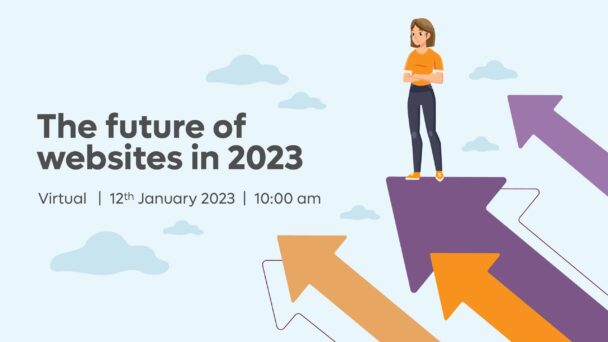
Duration: 30 minutes
There’s a real shift I’ve seen happening over the past few years and I believe that this year is the year it’s going to gain the biggest momentum.
In this article we will also discuss how you might be able to harness this shift so you can:
- Get ahead of any competition,
- Increase the success of your website by increasing engagement and conversion rate,
- Improve the overall perception of your brand.
So what is this shift?
If you’re in marketing then you’ve no doubt heard about ‘human-centred design’ or ‘human-centred marketing’. So that’s not new necessarily.
It’s linked in with ‘design thinking’, which you may have heard about. Design thinking is the practice of understanding your target audience, their problems and then identifying & testing solutions to those problems. And this practice has been around for years, albeit only for larger companies with budgets big enough to invest in this sort of thing.
But sadly, putting your audience first, having that human-centred approach, hasn’t yet trickled down to SMEs . Or specifically their websites.
This is what I believe will be the biggest shift for websites over the coming year. A truly human-centred web for organisations large and small.
A human-centred web for all organisations large and small.
We’ll shortly explore why I think that in a second and more importantly what that means for websites specifically.
Before we do that, it’s worth reminding ourselves of the AirBnb case study on this subject, as it’s a great example of how a human-centred approach can benefit all businesses large and small.
Airbnb example
It was early days and they were close to going bust.
After spending some time on the site, actually using the product and acting like a consumer, they had a realisation that the photos on the site were less than adequate. Mostly they had been taken on an iphone, with no thought for composition and lighting.
So they went out with a proper camera to some of the properties and took high quality photos, then loaded them onto the website.
After one week they could see that this seemingly small change, doubled their revenue. So they rolled it out further, and well the rest is history.
Putting themselves in their customer’s shoes broke them out of the rut of trying to solve problems from behind the computer screen. CRO (conversion rate optimisation) can only take you so far.
It’s possible for pretty much any organisation no matter what stage of growth, to ‘make it’ with the same shift in focus.
But why do I think that human-centricity for the web is going to take off this year?
Information age
We’re now firmly in the information age. This means we all have access to content and education on this kind of thing, and putting your customer and their needs, and being empathetic to their experience, is going to be more widely acknowledged and understood.
Because of this access to information, it won’t just be for the exclusive access of organisations who can afford the sprints, workshops and research anymore.
It’s going to be far more achievable for all.
Popularity of related topics increasing
We’re also seeing related topics such as personal branding, storytelling and emotional intelligence being discussed more frequently on social media and in podcasts. There’s also an influx of new agencies popping up helping you with these things, which can also be seen as a big indication of things to come.
The term “UX” is continuing its upward trend according to Google Trends:
“Customer experience” has also reached new highs and still climbing:
Putting the consumer and their needs at the heart of the brand experience is an absolute necessity for any business not wishing to be left behind.
Wider marketing
Another way we can identify marketing shifts is by looking at what big brands are doing with other aspects of their marketing. Television and social media can be the best place to start for this.
We’ve definitely witnessed a shift with how brands are approaching their adverts. For example, McDonalds have gone from product marketing, to storytelling and empathy focus. Take a look at the before and after adverts here:
Before:
After:
With the latter, it’s clear how they’re trying to engage the audience by resonating. Parents are likely to watch it empathise with the frustrations of children doing things they’re not supposed to be doing. Whilst children will watch it and empathise from the boy’s point of view; people always spoiling their fun! Then dads will watch it and think ‘yeah my child does that to me all the time’. And then seeing how they all come together at the end is designed to get families to aspire to that, while McDonalds facilitates that bond!
If we see the big brands like McDonalds and John Lewis embracing this more human-centred approach for adverts, then it is a clear indicator of what works. Therefore it makes sense to apply the same theory to marketing and our websites too.
So exactly what does this mean for our websites in 2023 then?
This is by no means an exhaustive list, but here are a few ways we will see websites changing:
- There’ll be no more features and benefits
- No more selling
- No more take-take-take
- No more ego-centric websites
- No more designing for only neurotypical and able-bodied audiences
- No more disjointed experiences
Let’s explore each of these in more detail.
No more features and benefits!
By this I mean no more sales focused purely on features and benefits.
These elements have hung around like a bad hangover from the pre-information age which was a time when information was not available like it is now. Businesses held tightly onto their secret sauce, and as such were able to package and sell those secrets because no-one else had access to them. Back then, marketing could be focused mostly on the product or service and the features and benefits of it. And it worked. Consumers bought into this.
But here, in the information age there are rarely any secrets as you can find out how to do pretty much anything by Googling or searching on YouTube.
In the information age, marketing has had to adjust. It’s now all about education. It’s about being the best at showing people how to overcome their challenges. Being the most memorable, the most helpful and holistic brand out there.
Businesses not doing this, will fall behind their competitors who are, there will also be an air of mistrust or scepticism, at the very worst, to hang over your organisation, or an air of the unknown at best. If a user is trying to decide between you or a competitor and that competitor is sharing swathes of information and resources, it could look like you have something to hide, and in choosing you, the risk for the user increases.
We may see AI coming into play in terms of personalisation to adapt and present content which is the most relevant to the user. With this there’s huge opportunity to resonate with audiences by offering them the content that they’re most likely to be interested in to help them make their decisions.
No more selling!
By that I mean no more pushing one’s own agenda, which organisations (stakeholders) can be guilty of.
Unfortuantely websites are widely believed to be a sales tool and that’s wrong. There doesn’t appear to be any understanding of what the user needs before they’re ready to make that big step, and equally no attempt to offer them the information they need before they’re ready to make that step.
Therefore the first call to action you might see is likely to be donate / buy now / enquire / sign up etc.
Websites should instead be seen as a brand-building, engagement tools first and foremost. For this to be a success, it’s important to understand the problems and drivers of your audience.
So instead guide them to the content they really need. Pushing them in another direction is likely to just frustrate them as you’re making it harder for them to find what they’re looking for.
Understanding the expected user journey for your different audience types, will allow you to confidently prioritise and pave the way for them on your website.
Give give give. No more taking!
Websites are always seemingly wanting something from us. Whether it’s our data or our money. However simple psychology tells us that givers gain, and this has never been more true in the information age.
To be more human-centred, we need to show we’re able to give something away, before we ask for something from our users. There’s always a way to give, whether B2B or B2C, no website is off limits with this approach.
It could be in the form of free content, tips, self-help guides or similar. The important thing is, it offers something of value to the user, that will help make their lives better.
I love this great example from NSPCC as to how to be more giving rather than straight up asking for donations, which is what most charity websites ask for.
The first thing you see on the site is a free training course which is a perfect example of how to be giving first and foremost for a much more human experience.
No more ego-centric websites
Businesses love talking about themselves, some people do too. They’re passionate about their product, and that’s great, but just like “that person” you meet at a networking event, unless they start asking you questions and engaging you in that conversation, it’s going to do nothing but put you off.
We see websites talking about themselves all the time – saying “we do this” and “we do that”. What they should be doing is instead resonating with their audience. Why are they there in the first place? What problem are they experiencing? What thoughts are they having? With these insights it’s then possible to empathis.
With empathy comes connection.
Let’s face it, we all want to connect with our target audience.
To illustrate this point I’m going to take an example value proposition and show how it could be rephrased to be more human and empathetic.
Reading that you’ll see how it comes across as quite matter of fact and very much about what they do.
Now here’s how it could be phrased so it’s less about them and has better emotional resonance and impact for their audience.
It’s possible to rewrite it in no time at all simply by putting ourselves into the audience’s shoes and exploring what might resonate the most. Reading or hearing stories about children being harmed is really emotive for me personally so I was able to rephrase it with that in mind.
Notice how much more emotive it is; how much stronger and more impactful it is. As a result it’s much more memorable too.
In an ideal world you’d do user research to establish commonalities with what resonates the most with your audience and then adapt the value proposition to reflect that.
No more designing for only neurotypical and able-bodied audiences
Did you know that 15% to 20% of the population is considered to be neurodiverse?
That’s 2 in every 10 users on your website. Or 200 in every 1000. That’s a huge percentage of your audience who’s needs are unlikely being met.
Neurodiverse brains work differently from a neurotypical brain. These users may have difficulty processing information, colours, imagery, numbers, text and copy amongst a variety of other things, and some elements might even be triggering for them.
To be truly human-centric, it’s important to cater for this audience. Why wouldn’t you if it engages and potentially converts an additional 20% of all users!?
What might this mean for our websites?
It may mean that you pay extra attention to how you chunk information, ie. make it more digestible. Or how you avoid colours and fancy effects and graphics that may trigger these users. It all comes under the term ‘accessibility’, and really in this day and age should be considered no matter what size of business.
No more disjointed journeys
We’re likely to start experiencing much smoother more engaging journeys when interacting with websites.
Messaging will be more consistent and able to seamlessly link one page with another through the form of:
- Storytelling
- Unifying mission statements.
Storytelling
Storytelling provides order. It’s the way humans make sense of the world.
Stories trigger our imagination and when that happens, we ourselves become participants in the narrative. We become the hero of the story.
There’s also neuroscientific evidence of a direct correlation between storytelling and influencing economic behaviour in this experiment by Paul J Zak.
As you can see, the evidence is compelling so there’s a lot of sense in developing ways to incorporate storytelling into websites.
The most common forms of storytelling we see in practice on websites include content such as:
- Case studies,
- Business story on about pages,
- Testimonials.
However, the way we see organisations properly embracing storytelling on their websites, will be more all-encompassing. With a clearly defined mission statement, much more is possible. Messaging and copy across the whole website can be adjusted to incorporate and reinforce the business’s “why” or mission. It becomes apart of the business’s ‘tone of voice’ and can seamlessly link one page with the other.
Simon Sinek fhas some great guidance on how to formulate your company’s mission.
Summary
The important point here is about understanding your audience through research, or quite simply just putting yourself in their shoes.
You need to know:
- Who uses your website,
- How they use your website,
- What might be driving them to your website / business / organisation,
- What influences their decisions,
- What problems and barriers are they facing.
Once you have this insight, it’s possible to translate it digitally, resulting in an emotionally intelligent interface.
Digital translation
There are some risks that come with the digital translation step. With so many biases that creep into our judgement and decision making, it’s easy to get swept up with the latest trends and shoehorn them in to try and solve some of the problems users are experiencing.
So for those who do have the budget, research incorporating behavioural science is the answer.
For those with smaller budgets, translation with a bit of bias, is a better starting point than doing nothing.
Behavioural science
Using behavioural science models, it’s easier to ‘hit the right mark’ with the digital translation and here’s why.
Using these models we can identify what really motivates an audience by defining their drivers. These drivers could be things like fame, fortune, prestige, power or community. There are around 60-70 drivers (in the model we use), so it helps to refine and focus the recommendations.
As an example, if an audience is money-driven then demonstrating savings that can be achieved by using your service or product would be a great way of resonating and engaging them. However this wouldn’t work so well with an audience who is driven by community.
Consumer Neuroscience
Consumer neuroscience is a closely related field which complements behavioural science and helps us understand and empathise with our users even more deeply.
Big brands favour neuromarketing, particularly in relation to television adverts, and we also use it when performing usability testing to identify areas of friction for optimisation by gaining insights into the emotional state of audiences.
Neuromarketing is effective because eliminates the subconscious bias which occurs when questioning usability test participants on their experience and decisions when completing a task. This bias means they post-rationalise those decisions resulting in insights that are skewed or completely inaccurate.
Using neuroscience tools such as GSR, EEG and eye-tracking, provides us with insights into their true emotional state when performing those tasks.
Summary
Having a human-centred website is possible for all businesses and organisations.
And why would we want to do it?
People will remember your brand and website above anything else, for how you made them feel, not what you said to them or for their product or service.
You can only make them feel a certain way if you understand them, deeply.
All our resources are FREE
Want to stay updated?
Get instant updates on our latest news and resources by subscribing to our mailing list
"*" indicates required fields
Related Services
Expert review
Want to know if your website is doing these things wrong? An expert review is a great place to start
Expert Review